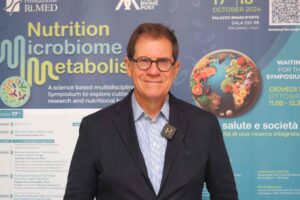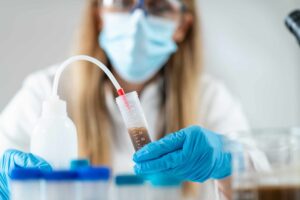-
What is already known on this topic
Gut microbes are associated with a wide range of diseases, including type 1 diabetes. But how the gut microbiota changes over time is poorly understood. -
What this research adds
By analyzing more than 12,000 stool samples from about 900 children aged 3 to 46 months, the Environmental Determinants of Diabetes in the Young (TEDDY) study identified 3 distinct phases of microbiome progression: developmental phase (3–14 months of age), transitional phase (15–30 months), and stable phase (31 months onwards). -
Conclusions
The study offers the most-detailed picture yet of how the gut microbiota develops in early life, particularly in relation to type 1 diabetes, and opens new avenues for work on the role of gut microbes in health and disease.
The gut microbiota make-up changes over time in 3 phases: developmental phase (3–14 months of age), transitional phase (15–30 months), and stable phase (31–46 months), researchers reported in the journal Nature. The study, led by Christopher Stewart of the Baylor College of Medicine, in Houston, Texas, indicated that breastfeeding is associated with higher levels of Bifidobacteria, whereas weaning leads to increased microbial diversity. Vaginal birth is associated with an increase in Bacteroides. Other factors, such as living with siblings or pets, influence gut microbiota profiles, the team has found.
The development of the gut microbiota during infancy and childhood has been shown to influence the pathobiology of diseases later in life. But no studies have characterized the early-life gut microbiota in detail.
The Environmental Determinants of Diabetes in the Young (TEDDY) study is the largest clinical study on the infant microbiome to date. For 10 years, the study has been collecting samples from six clinical centers in Europe and the United States to determine what triggers type 1 diabetes in children at high genetic risk for the disease.
The researchers analyzed a total of 12,500 stool samples from 903 children, aged 3 to 46 months, from 3 European countries (Germany, Sweden and Finland) and 3 US states (Colorado, Georgia and Washington). After collecting stool samples monthly, the team characterized their microbiome and functional metagenome.
Three distinct phases of microbiome progression
Analysis of 16S rRNA gene and metagenomics sequencing data showed that the gut microbiota make-up evolves over time in 3 phases: developmental phase (3–14 months of age), transitional phase (15–30 months), and stable phase (31–46 months).
Bifidobacterium species dominated during the developmental phase. As children grew up, their gut microbiota increased in diversity until it stabilized from 31 months of age.
Breastfeeding influences microbiota development
Breastfeeding was associated with the presence of Bifidobacterium species, with higher levels of B. bifidum, B. breve, B. dentium, Lactobacillus rhamnosus and Staphylococcus epidermidis, and lower levels of Escherichia coli, Tyzzerella nexilis, Eggerthella lenta, Ruminococcus torques and Roseburia intestinalis. Bifidobacterium spp. and Lactobacillus spp. are found in breast milk, and Staphylococcus spp. on the skin surrounding the nipple, suggesting that these bacteria can be transferred from the mother to the child.
As the infants started to get weaned, the researchers observed less dominance of Bifidobacterium, and after the cessation of breast milk, 110 bacterial species, mainly belonging to the Firmicutes phylum, significantly increased.
Several factors contribute to microbiota development
In addition to feeding practices, birth mode was also associated with changes in microbiota composition over the first year of life. Vaginal birth, for example, resulted in higher levels of Bacteroides species.
Other factors were associated with differences in the early-life gut microbiota. For example, children living with siblings and pets showed increased rates of microbiota maturation.
What’s more, the group of children analyzed (white, non-Hispanic and at high genetic risk for type 1 diabetes) showed higher levels of Streptococcus and Lactococcus species in their gut compared to healthy individuals.
In summary, the study shows that the first year of life is crucial for the development of the gut microbiota, and breastfeeding is the main factor to affect microbiota composition. Other factors, such as birth mode, siblings, and pets are also associated with changes in the microbiota during early life.
Although scientists should be careful in extrapolating the findings to a wider population, the study provides insights into the link between gut microbiota, infant development, and type 1 diabetes.












